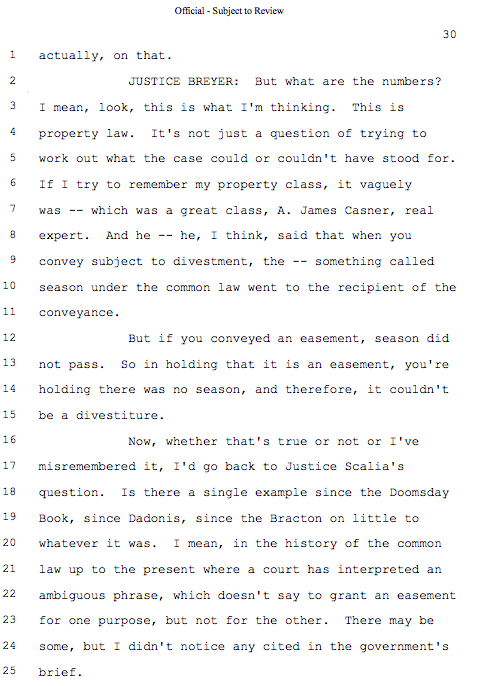Justices Roberts and Alito got some explaining to do. This is a bit confusing, so follow along.
In Parents Involved, Justice Breyer dissented. He claimed that in Seattle, there was a history of de jure segregation:
1. Segregation, 1945 to 1956. During and just after World War II, significant numbers of black Americans began to make Seattle their home. Few black residents lived outside the central section of the city. Most worked at unskilled jobs. Although black students made up about 3% of the total Seattle population in the mid-1950’s, nearly all black children attended schools where a majority of the population was minority. Elementary schools in central Seattle were between 60% and 80% black; Garfield, the central district high school, was more than 50% minority; schools outside the central and southeastern sections of Seattle were virtually all white.
The plurality by Chief Justice Roberts (joined by Justice Alito), criticized this assertion of facts:
The dissent elides this distinction between de jure and de facto segregation, casually intimates that Seattle’s school attendance patterns reflect illegal segregation, post, at 5, 18, 23,15 and fails to credit the judicial determination—under the most rigorous standard—that Jefferson County had eliminated the vestiges of prior segregation. The dissent thus alters in fundamental ways not only the facts presented here but the established law.
15 Justice Breyer makes much of the fact that in 1978 Seattle “settled” an NAACP complaint alleging illegal segregation with the federal Office for Civil Rights (OCR). See post, at 5, 8–9, 18, 23. The memorandum of agreement between Seattle and OCR, of course, contains no admission by Seattle that such segregation ever existed or was ongoing at the time of the agreement, and simply reflects a “desire to avoid the incovenience [sic] and expense of a formal OCR investigation,” which OCR was obligated under law to initiate upon the filing of such a complaint.
So, one would think that the Chief and Justice Alito do not find this part of the dissent accurate.
Then, we come to Schuette. The plurality, joined by the Chief and Alito, favorably cites the very portion of the Breyer dissent they criticized 7 years earlier!
Although there had been no judicial finding of de jure segregation with respect to Seattle’s school district, it appears as though school segregation in the district in the 1940’s and 1950’s may have been the partial result of school board policies that “permitted white students to transfer out of black schools while restricting the transfer of black students into white schools.” Parents Involved in Community Schools v. Seat- tle School Dist. No. 1, 551 U. S. 701, 807–808 (2007) (BREYER, J., dissenting).
Scalia calls bullshit.
That conclusion is derived not from the opinion but from recently discovered evidence that the city of Seattle had been a cause of its schools’ racial imbalance all along: “Although there had been no judicial finding of de jure segregation with respect to Seattle’s school district, it appears as though school segregation in the district in the 1940’s and 1950’s may have been the partial result of school board policies.” Ante, at 9.2
2 The plurality cites evidence from JUSTICE BREYER’s dissent in Par ents Involved in Community Schools v. Seattle School Dist. No. 1, 551 U. S. 701 (2007), to suggest that the city had been a “partial” cause of its segregation problem. Ante, at 9. The plurality in Parents Involved criticized that dissent for relying on irrelevant evidence, for “elid[ing the] distinction between de jure and de facto segregation,” and for “casually intimat[ing] that Seattle’s school attendance patterns re- flect[ed] illegal segregation.” 551 U. S., at 736–737, and n. 15. Today’s plurality sides with the dissent and repeats its errors.
As does Sotomayor:
9 The plurality relies on JUSTICE BREYER’s dissent in Parents Involved to conclude that “one permissible reading of the record was that the school board had maintained policies to perpetuate racial segregation in the schools.” Ante, at 9–10. Remarkably, some Members of today’s plurality criticized JUSTICE BREYER’s reading of the record in Parents Involved itself. See 551 U. S., at 736.
The entire premise on which the Court managed to distinguish the political process cases was based on a reading of the Seattle case they disagreed with 7 years ago. This is wrong. The cases should have just been overruled. Not redefined in this surreal way.
